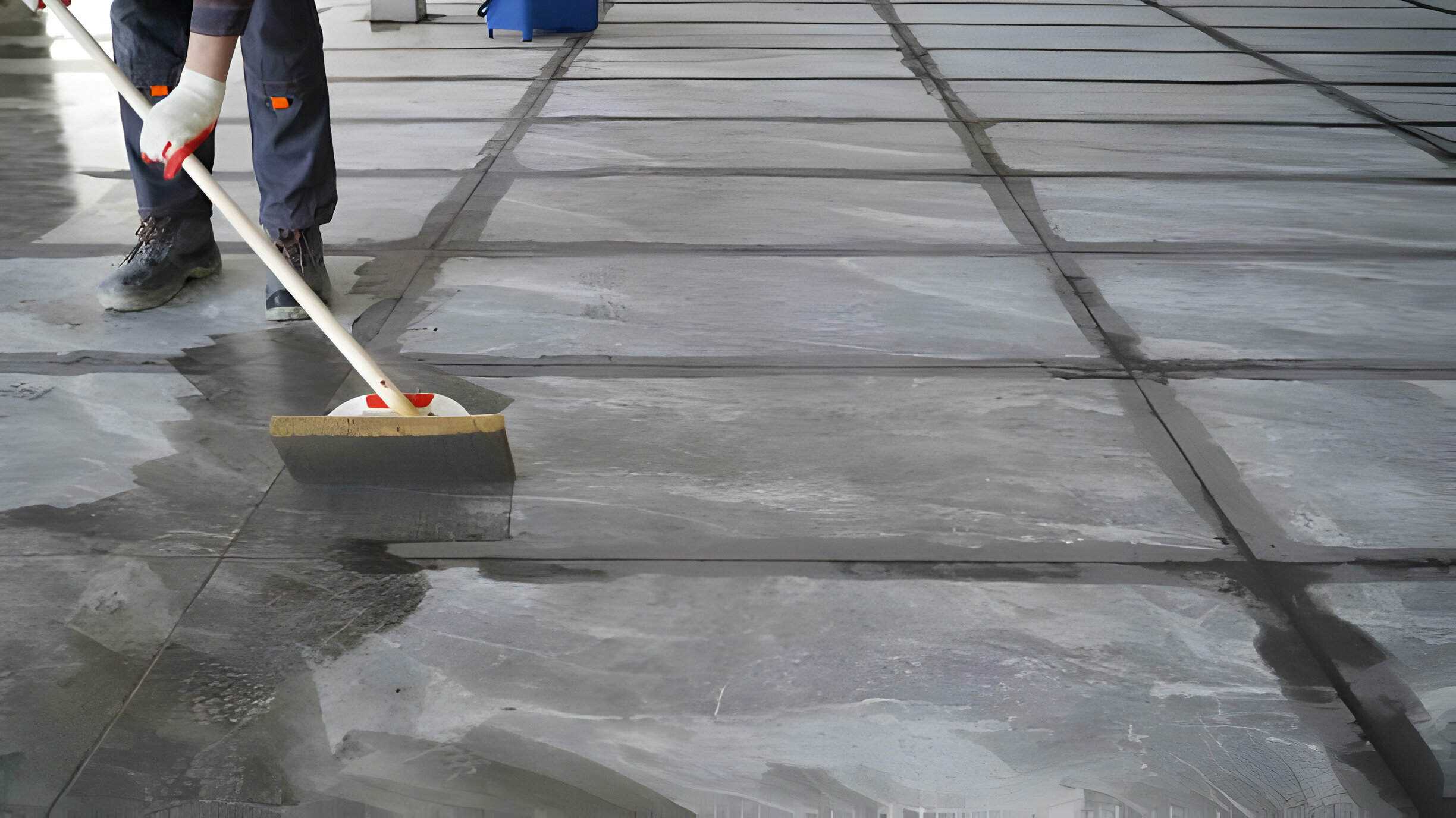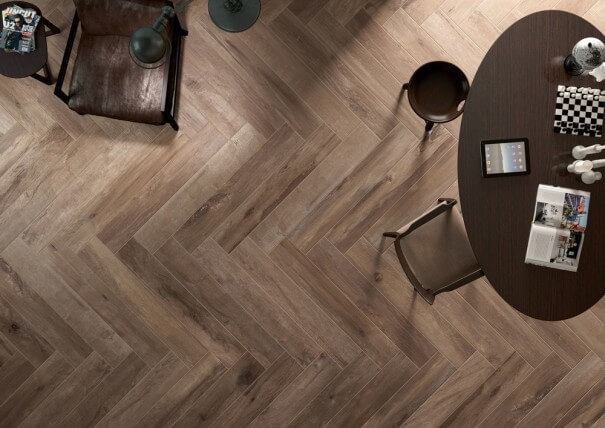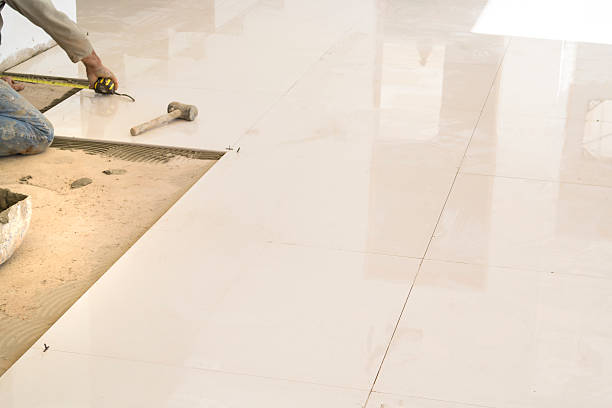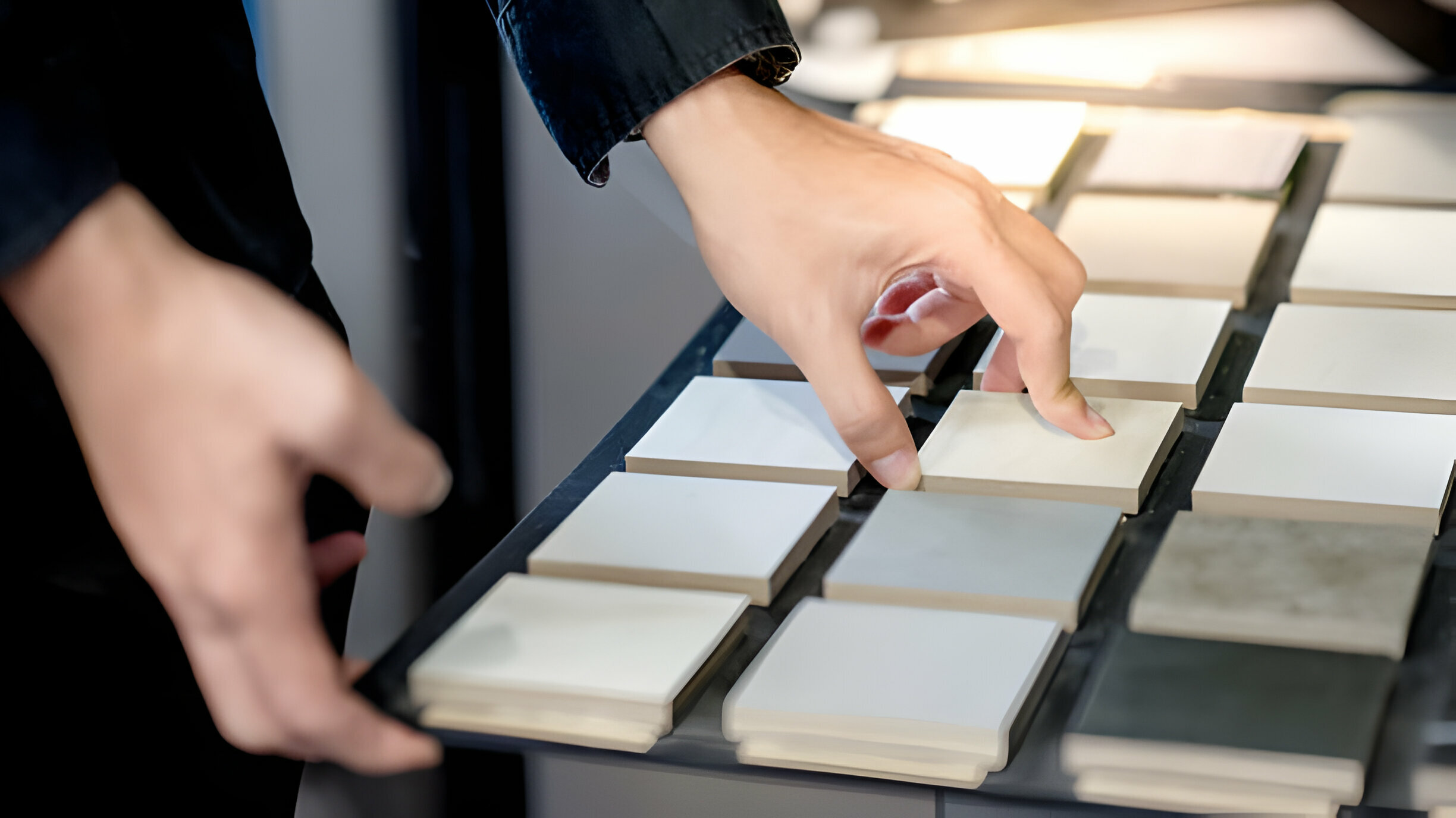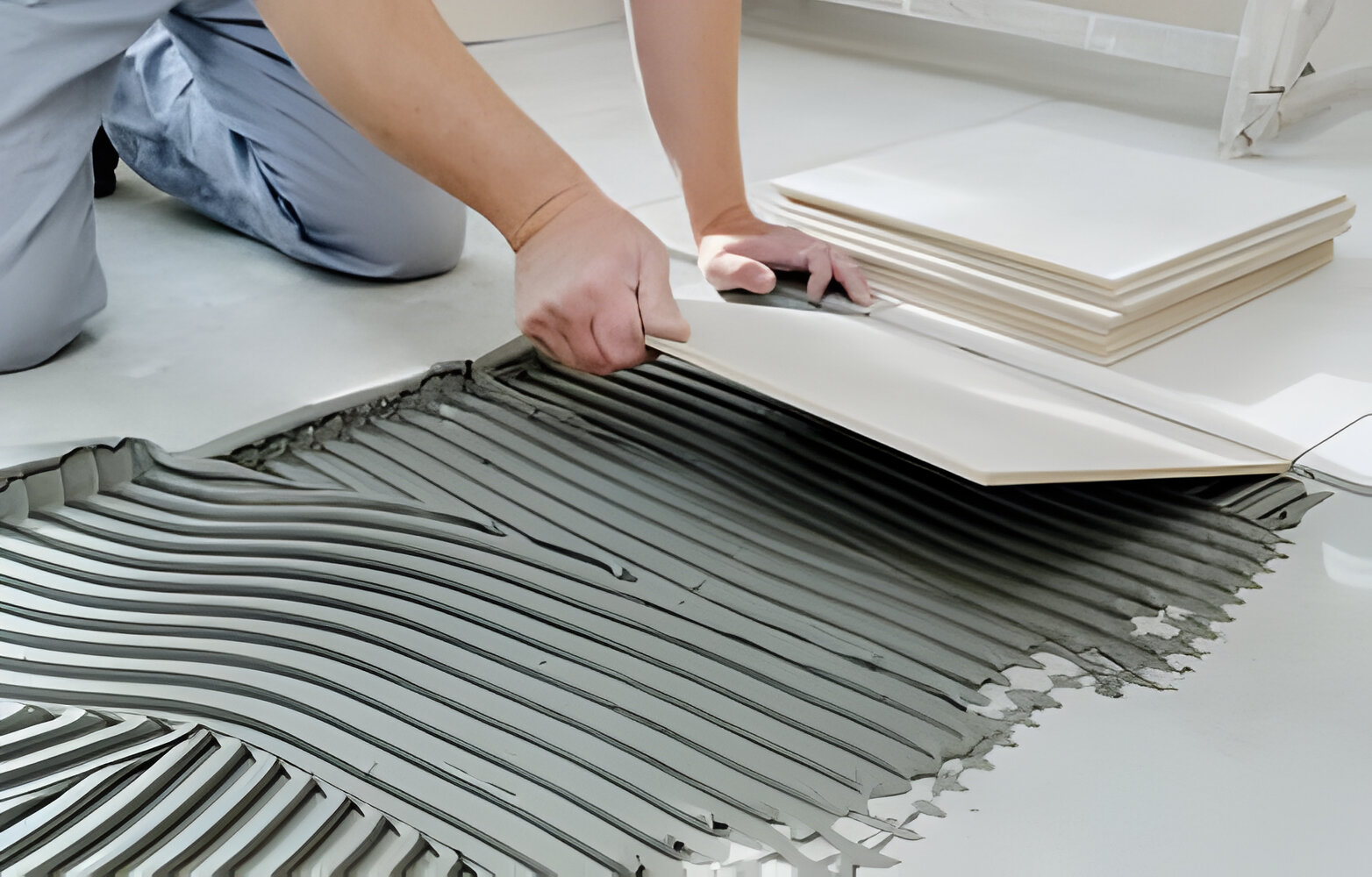Porcelain tiles are a popular choice for flooring and wall covering due to their durability, versatility, and aesthetic appeal. However, over time, dirt, grime, and stains can accumulate on porcelain surfaces, detracting from their beauty and hygiene. Regular cleaning is essential to maintain the appearance and longevity of porcelain tiles. Not only does cleaning remove surface dirt and stains, but it also helps to prevent the growth of mold, mildew, and bacteria, promoting a healthier indoor environment.
The cleaning process for porcelain tiles typically involves several steps to effectively remove dirt, stains, and grime while preserving the integrity of the tiles. These steps may include sweeping or vacuuming to remove loose debris, mopping with a mild detergent solution to lift dirt and stains, and rinsing with clean water to remove soap residue. In some cases, specialized cleaning products or techniques may be required to tackle stubborn stains or deep-seated dirt. Additionally, proper maintenance practices such as sealing grout lines and avoiding abrasive cleaners can help to prolong the life and beauty of porcelain tiles. In this guide, we will explore in detail the various methods and products available for cleaning porcelain tiles, as well as tips for maintaining their appearance and durability over time.
What Are Porcelain Tiles?
Porcelain tiles are a type of ceramic tile made from a refined clay mixture that is fired at high temperatures, typically above 1200 degrees Celsius (2200 degrees Fahrenheit). This firing process creates a dense, durable material that is resistant to water absorption, stains, and wear. Porcelain tiles are known for their strength and versatility, making them a popular choice for various applications, including flooring, wall covering, countertops, and even outdoor installations.
Unlike traditional ceramic tiles, which are usually glazed only on the surface, porcelain tiles are often glazed throughout the entire body of the tile. This means that even if the surface of a porcelain tile is chipped or scratched, the color and pattern will remain consistent. Additionally, porcelain tiles come in a wide range of sizes, shapes, colors, and patterns, allowing for endless design possibilities.
Due to their durability and low maintenance requirements, porcelain tiles are commonly used in high-traffic areas such as kitchens, bathrooms, and entryways, as well as commercial spaces like shopping malls, airports, and hotels. Their resistance to moisture and stains also makes them an excellent choice for outdoor applications such as patios, decks, and pool surrounds.
If you are looking to buy porcelain tile, then choosing Tile Factory Outlet can be a wise decision. With a wide range of high-quality porcelain tiles available at competitive prices, Tile Factory Outlet offers options suitable for any project, whether it’s residential or commercial. Their commitment to customer satisfaction and expertise in the tile industry make them a trusted source for premium porcelain tiles.
How to Clean Porcelain Tiles
1. Get rid of all dust
To start the cleaning process for porcelain tiles, the first step is to eliminate all dust and loose debris from the surface. Dust and debris can accumulate on tiles, particularly in high-traffic areas and corners. To remove dust effectively, begin by using a broom or vacuum cleaner with a soft brush attachment. Sweep or vacuum the entire area, paying close attention to corners, edges, and grout lines where dust tends to accumulate. This initial step ensures that the surface is clear of any loose particles, allowing for a more thorough cleaning process and preventing scratching during subsequent steps. Once all visible dust and debris have been removed, the tiles are ready for the next phase of cleaning.
2. Localized cleaning
Localized cleaning is a crucial step in maintaining the pristine appearance of porcelain tiles, especially when dealing with stubborn stains or spills. This targeted approach allows for the focused treatment of specific areas that require extra attention. To begin, identify any localized stains or spots on the tiles, which could result from spills, grease, or other substances. Once identified, apply a suitable cleaning solution directly to the affected areas and allow it to sit for a few minutes. This dwell time helps to loosen the stains and makes them easier to remove during the cleaning process. After allowing the cleaning solution to work its magic, gently scrub the stained areas using a soft-bristled brush or a damp cloth. Be cautious not to use abrasive scrubbers or harsh chemicals, as these can damage the porcelain tiles. Rinse the area thoroughly with clean water to remove any residual cleaning solution and admire the spotless results of the localized cleaning effort.
Effective localized cleaning not only removes unsightly stains but also helps to preserve the integrity and beauty of porcelain tiles. By addressing stains promptly and with the right cleaning techniques, you can prevent them from becoming more difficult to remove over time. Regular maintenance and spot treatments ensure that your porcelain tiles retain their luster and charm, enhancing the overall aesthetic of your space. Whether it’s a spilled beverage or a cooking mishap, having the knowledge and tools to perform localized cleaning effectively empowers you to keep your porcelain tiles looking flawless for years to come.
3. Mopping with a cleaning solution and hot water
After addressing localized stains, the next step in cleaning porcelain tiles involves mopping the entire surface with a cleaning solution and hot water. Choose a mild detergent or a specialized tile cleaner designed for use on porcelain tiles. Dilute the cleaner in hot water according to the manufacturer’s instructions. Dip a mop into the cleaning solution, ensuring it is thoroughly saturated but not dripping excessively. Begin mopping the tiles in small sections, working methodically from one end of the room to the other. Use overlapping strokes to ensure complete coverage and pay particular attention to high-traffic areas and spots prone to spills or stains.
As you mop, periodically rinse the mop in clean water to remove dirt and grime that may accumulate. Avoid using too much water on the tiles, as excessive moisture can lead to streaks or water spots. Once you have mopped the entire surface, allow the tiles to air dry or use a clean, dry towel or mop to remove any remaining moisture. This step helps to ensure that the porcelain tiles are thoroughly cleaned and free from any residue, leaving them looking fresh and revitalized.
4. Final drying and buffing
After mopping the porcelain tiles with a cleaning solution and hot water, the final step in the cleaning process is to ensure thorough drying and buffing. Excess moisture left on the tiles can lead to water spots or streaks, so it’s essential to dry them completely. Begin by using a clean, dry towel or a microfiber cloth to wipe down the surface of the tiles. Pay special attention to grout lines and areas where water may have pooled during mopping. This helps to absorb any remaining moisture and leaves the tiles streak-free.
Once the tiles are dry, you can optionally buff them with a dry cloth to restore their shine and luster. Buffing the tiles enhances their appearance and ensures a polished finish. Use gentle circular motions with the cloth to buff the tiles evenly, working in small sections across the surface. This final step adds the finishing touch to the cleaning process, leaving your porcelain tiles looking clean, shiny, and rejuvenated.
If you’re seeking guidance on choosing porcelain tiles, peruse our comprehensive guide offering insights into factors such as durability, aesthetics, and maintenance considerations. Gain valuable information to make informed decisions for your tile selection needs.
Additional Tips and Tricks for Cleaning Tiles
1. Preventive Measures to Keep Tiles Clean
To maintain the cleanliness and longevity of porcelain tiles, consider implementing preventive measures to minimize dirt buildup and stains. One effective strategy is to place doormats at entryways to trap dirt and debris from shoes before it reach the tiles. Regular sweeping or vacuuming of high-traffic areas can also help prevent dirt accumulation. Furthermore, using coasters under beverage containers and mats under heavy furniture can prevent scratches and stains on the tiles. Additionally, promptly wiping up spills and avoiding harsh chemicals can preserve the appearance of porcelain tiles over time.
2. Dealing with Hard Water Stains
Hard water stains can mar the appearance of porcelain tiles, leaving behind unsightly white or chalky residue. To combat these stains, consider using a solution of equal parts water and white vinegar. Apply the solution to the affected areas and allow it to sit for several minutes to dissolve the mineral deposits. Then, gently scrub the stains with a soft-bristled brush or a damp cloth. Rinse the area thoroughly with clean water and dry it completely to prevent water spots. For stubborn hard water stains, you may need to repeat the process or use a commercial descaling product specifically designed for tiles.
3. Restoration and Polishing Techniques
Over time, porcelain tiles may lose their shine and develop scratches or dull spots. To restore their luster and polish, consider using a porcelain tile polish or sealer. These products can help rejuvenate the appearance of the tiles while providing a protective barrier against stains and wear. Before applying any polish or sealer, ensure that the tiles are clean and dry. Follow the manufacturer’s instructions carefully, and use a clean, lint-free cloth to apply the product evenly to the tiles. Allow the polish or sealer to dry completely before walking on the tiles or placing furniture on them. Regular application of polish or sealer can help maintain the beauty and shine of porcelain tiles for years to come.
Summary
Cleaning porcelain tiles involves several essential steps to ensure their longevity and aesthetic appeal. Firstly, removing all dust and debris sets the stage for effective cleaning. Localized cleaning targets stubborn stains or spills, while mopping with a cleaning solution and hot water provides a thorough overall clean. Final drying and buffing complete the process, leaving the tiles looking fresh and revitalized.
Regular maintenance is crucial for preserving the beauty and integrity of porcelain tiles. By implementing preventive measures to keep tiles clean and promptly addressing stains and spills, you can prevent dirt buildup and maintain the tiles’ appearance over time. Additionally, regular cleaning and polishing help to restore shine and luster, enhancing the overall aesthetic of your space. By incorporating these maintenance practices into your routine, you can enjoy beautiful porcelain tiles for years to come.
If you’re in search of porcelain tiles, explore our extensive collection featuring a wide range of designs, sizes, and finishes. Discover high-quality options that suit any project, whether residential or commercial, at competitive prices.

